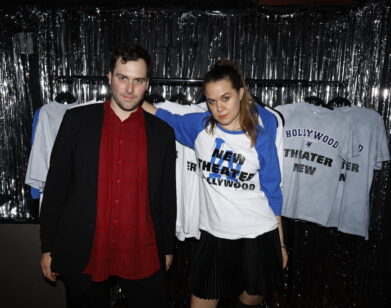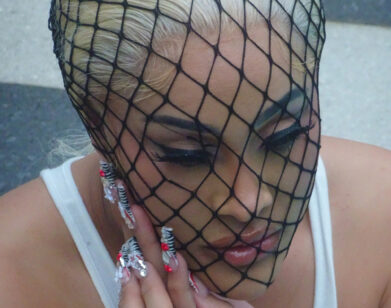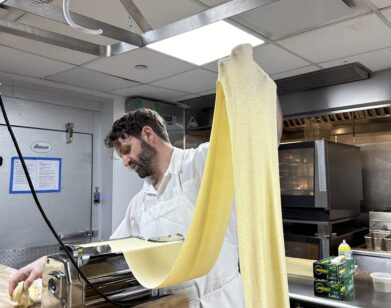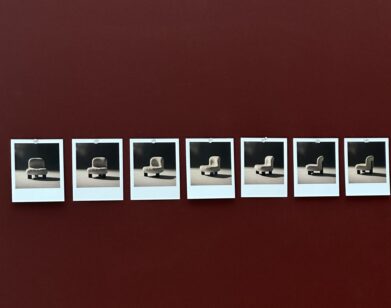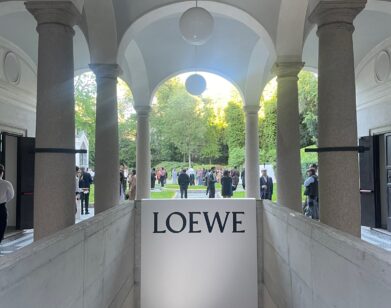ANIMALS Are the Future
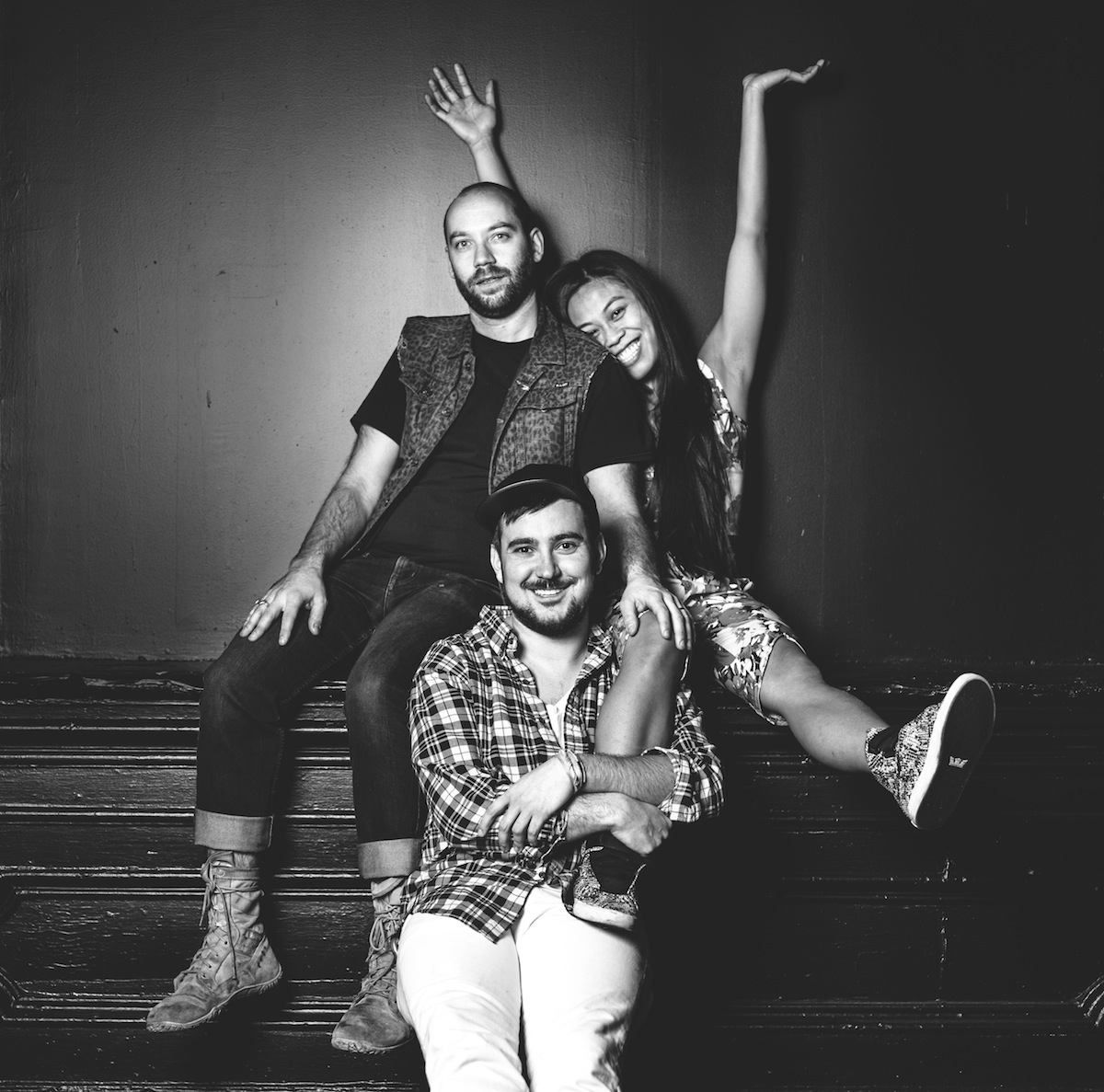
ABOVE (L-R): ANIMALS’ MIKE MIKOS, MICHAEL DE ANGELIS, AND NIKKI CALONGE. PHOTO BY CHRISTOPHER GABELLO
In 1917, Marcel Duchamp referred to the Baroness von Elsa Freytag-Loringhoven, a street performer and artist known for parading around Greenwich Village wearing nothing but feathers and vermillion to cover her bald head, as “the future.” He might have been referring to her inability, or unwillingness, to conform to the feminine standards of her time—while fellow aristocrats wore corsets and received visitors in their drawing rooms, Baroness Elsa wore dildos underneath her pants, got in fistfights with her lover William Carlos Williams, and inspired poetry by Ezra Pound, among others—but most likely, he was referring to her sculptural ready-mades, which she had been making for years before he introduced his Fountain (1917), a urinal transmuted into an artwork on which the Baroness was rumored to have collaborated.
Today, almost none of the Baroness’ artwork remains. Instead, her legacy lives on in her wild, kooky biography, which continue to inspire groups like ANIMALS, an award-winning performance collective made up of Nikki Calonge, Mike Mikos, and Michael De Angelis. Recently the recipient of the 2013 Tom Murrin Performance Award for their irreverent mash-ups of historical references, camp, puppetry, and dance numbers, ANIMALS first encountered the Baroness when asked to contribute to The Filmballad of Mamadada, an “exquisite corpse”-style film on her life. “The first thing we connected to was how colorful her life was,” explains Mikos. “The fights, the dramatic love affairs, the shoplifting, the outfits. She reminds us of people that we know, and of elements of our own personalities, which immediately started raising questions for us about what it means to be an artist.”
The Baroness so strongly resonated with the group that they decided to make a play about her life, The Baroness Is the Future, which will be performed at Dixon Place from January 23 through 25. The piece, which runs for roughly 60 minutes, is more than a re-telling of the Baroness’ life based on original source material; instead, it is a meditation on the contrast between making art and being a successful artist, which in today’s cultural landscape requires operating like a small business. “You just need money for every single day,” explains Mikos. “You need to be fundraising, scheduling, networking, applying for grants, doing your own accounting.” The most disheartening thing about this is that administrative work—the death of the creative impulse—actually does contribute to the posterity of a collective like ANIMALS. “I’d like to say, ‘But none of that matters if the work is crappy,’ but I’ve even seen companies whose work I think is kind of weak go really far by virtue of being highly organized,” laments Mikos.
On a recent Friday afternoon, we sat in on a rehearsal for the piece, which is a mash-up of dance, song, spoken word, and ribaldry characteristic of ANIMALS. What is most striking about the performers, who along with Calonge include Linda Mancini, Brighid Greene, Lucy Kaminsky, Madison Krekel, and Eva Peskin, was how beautifully their bodies moved. One actress was missing her front tooth; none of them had impossibly thin Hollywood-type figures. But the atmosphere of the collective was that they expressed themselves without inhibition. “It’s for you, it’s not for anyone else,” said Mikos to one performer who asked for notes in a scene where she pulls down her pants and waves a strapped-on dildo around like it’s a trophy.
The set is minimal, consisting of an origami-type sculpture that serves as a table, a rosette, or the interior wall of the Baroness’ apartment, depending on the scene. Instead, the focus is almost entirely on the performances. At one point, the actresses, who alternate between channeling the Baroness and playing the part of female theater directors gathered together for a panel discussion, start chanting in unison, “Life is one damn thing after the other.” Their voices are a siren call of mourning; at the end of the segment, the room goes dark.
At the beginning of the work, the troupe flirts with the idea that the Baroness’ flamboyant freedom must be reclaimed in order to bring dignity back to the creative process. But the show ends on a sad note, inspired by the journal she wrote at the end of her life, right before she died of gas exposure in her flat in Paris. “At first, she’s looking back on her youthful misadventures,” explains Mikos. “Then there are a handful of digressions where she’s looking at her life in the present moment, and she’s bitter and disappointed and burnt out.” By channeling both periods, ANIMALS to be saying that the future for artistic endeavors, no matter their path, is the acute misery of the proverbial candle being snuffed out thanks to exhaustion. It’s not a happy ending, but perhaps it’s a worthy one.
ANIMALS’ THE BARONESS IS THE FUTURE RUNS THIS THURSDAY THROUGH SATURDAY AT DIXON PLACE IN NEW YORK. FOR TICKETS, CLICK HERE.

